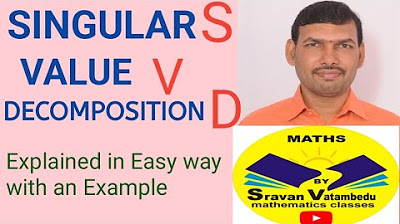The US Constitution | Period 3: 1754-1800 | AP US History | Khan Academy
Summary
TLDRThis video script delves into the U.S. Constitution's structure, emphasizing its brevity and flexibility. It outlines the three branches of government established by the first three articles: the legislative (Article 1), the executive (Article 2), and the judicial (Article 3). The framers' intent was to balance power through separation of powers and checks and balances, ensuring no single branch dominates, thus maintaining a democratic and accountable government.
Takeaways
- 🏛️ The U.S. Constitution was designed with a bicameral legislature, consisting of a House of Representatives and a Senate, to balance representation based on population and equal state representation.
- 📜 The Constitution is notably concise, spanning only four pages, which was intentional to establish broad principles rather than specific laws.
- 🌐 The U.S. Constitution is the oldest national constitution still in effect, a testament to its flexibility and enduring principles.
- 🔑 The framers created a three-branch government to address the weaknesses of the single branch under the Articles of Confederation.
- ⚖️ The legislative branch, established in Article 1, was considered the most powerful, with the authority to make laws, tax, raise an army, and coin money.
- 🏅 The executive branch, outlined in Article 2 and headed by the President, is responsible for enforcing laws and has significant influence in foreign affairs.
- 📚 The judicial branch, as per Article 3, is headed by the Supreme Court, which interprets laws and determines their constitutionality.
- 🔄 The framers aimed to separate powers among the branches to prevent the concentration of power and to ensure a system of checks and balances.
- 🚫 The concept of checks and balances allows each branch to limit the powers of the others, such as the President's veto or the Supreme Court declaring laws unconstitutional.
- 🤝 Cooperation is necessary among the branches for effective governance, as they are designed to work together while keeping each other in check.
Q & A
What was the key compromise made at the Constitutional Convention in 1787?
-The key compromise was the agreement on a bicameral legislature, consisting of a House of Representatives with members apportioned based on state population and a Senate with two senators per state, regardless of its size.
How many articles are there in the U.S. Constitution?
-There are seven articles in the U.S. Constitution.
Why was the U.S. Constitution designed to be relatively short and broad?
-The Constitution was designed to be broad and concise to establish principles rather than specific laws, allowing for flexibility and application to various situations.
What is unique about the U.S. Constitution in comparison to other nations' constitutions?
-The U.S. Constitution is the oldest constitution still in effect at the national level, which is a significant achievement considering its age and continued relevance.
Which branch of government was intended to be the most powerful according to the framers of the Constitution?
-According to the framers, the legislative branch, established in Article 1, was intended to be the most powerful, as it was given the power to make laws, tax, raise an army, and coin money.
What is the role of the executive branch as established in Article 2 of the Constitution?
-The executive branch, headed by the president, is responsible for enforcing or carrying out the laws made by Congress, including waging war, negotiating treaties, and appointing government officials.
What is the primary function of the judicial branch as outlined in Article 3?
-The judicial branch, headed by the Supreme Court, is tasked with interpreting laws and determining whether actions by Congress and the president are within the bounds of the Constitution.
Why did the framers of the Constitution create a three-branch government?
-The framers created a three-branch government to remedy the problems caused by the single branch government under the Articles of Confederation and to ensure a separation of powers to prevent any one branch from becoming too powerful.
What is the principle of checks and balances in the context of the U.S. Constitution?
-Checks and balances refer to the system where each branch of government can limit the powers of the other branches to prevent any one branch from becoming too powerful.
How can the president check the power of Congress?
-The president can check the power of Congress by using the veto to reject laws they do not agree with.
How can the Supreme Court check the power of the executive and legislative branches?
-The Supreme Court can check the power of the executive and legislative branches by declaring laws unconstitutional if they are not consistent with the Constitution.
Outlines

This section is available to paid users only. Please upgrade to access this part.
Upgrade NowMindmap

This section is available to paid users only. Please upgrade to access this part.
Upgrade NowKeywords

This section is available to paid users only. Please upgrade to access this part.
Upgrade NowHighlights

This section is available to paid users only. Please upgrade to access this part.
Upgrade NowTranscripts

This section is available to paid users only. Please upgrade to access this part.
Upgrade NowBrowse More Related Video

Mystery of Area 51 | Are there really UFOs and Aliens? | Dhruv Rathee

How would you go about solving this? Limit of x/sqrt(x^2+1) as x goes to infinity. Reddit inf/inf

SINGULAR VALUE DECOMPOSITION (SVD)@VATAMBEDUSRAVANKUMAR

The 7 Sinful Vs 7 Heavenly Roblox YouTubers

Erick tohir Serius Minta Re match😱Penyebab Shayne Pattynama Tranding🔴STY Siapkan Tim jawab Vietnam

How To Integrate Using U-Substitution

Why Omega-3 Supplements cause Heart Problems (unless you pay attention to THIS)
5.0 / 5 (0 votes)